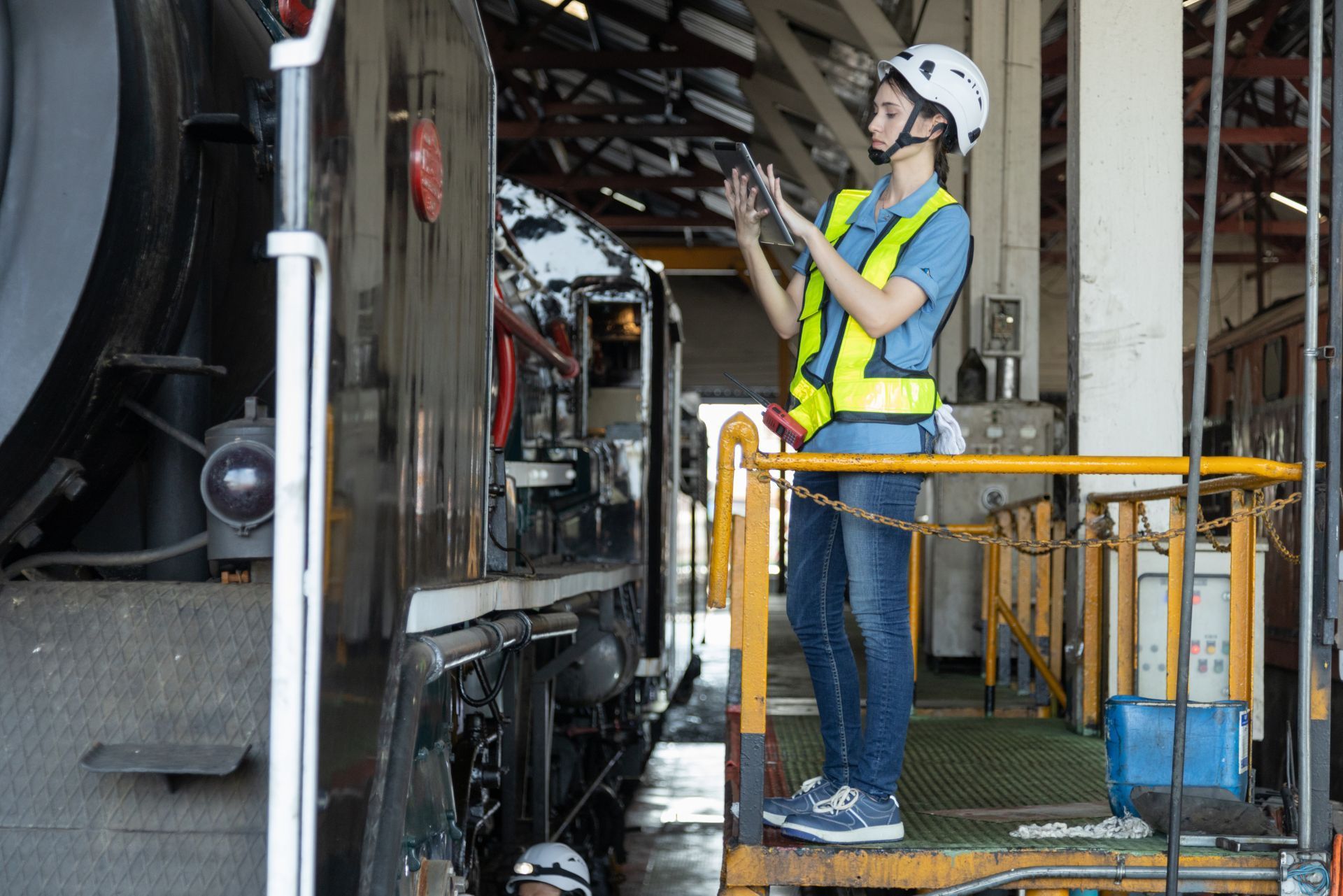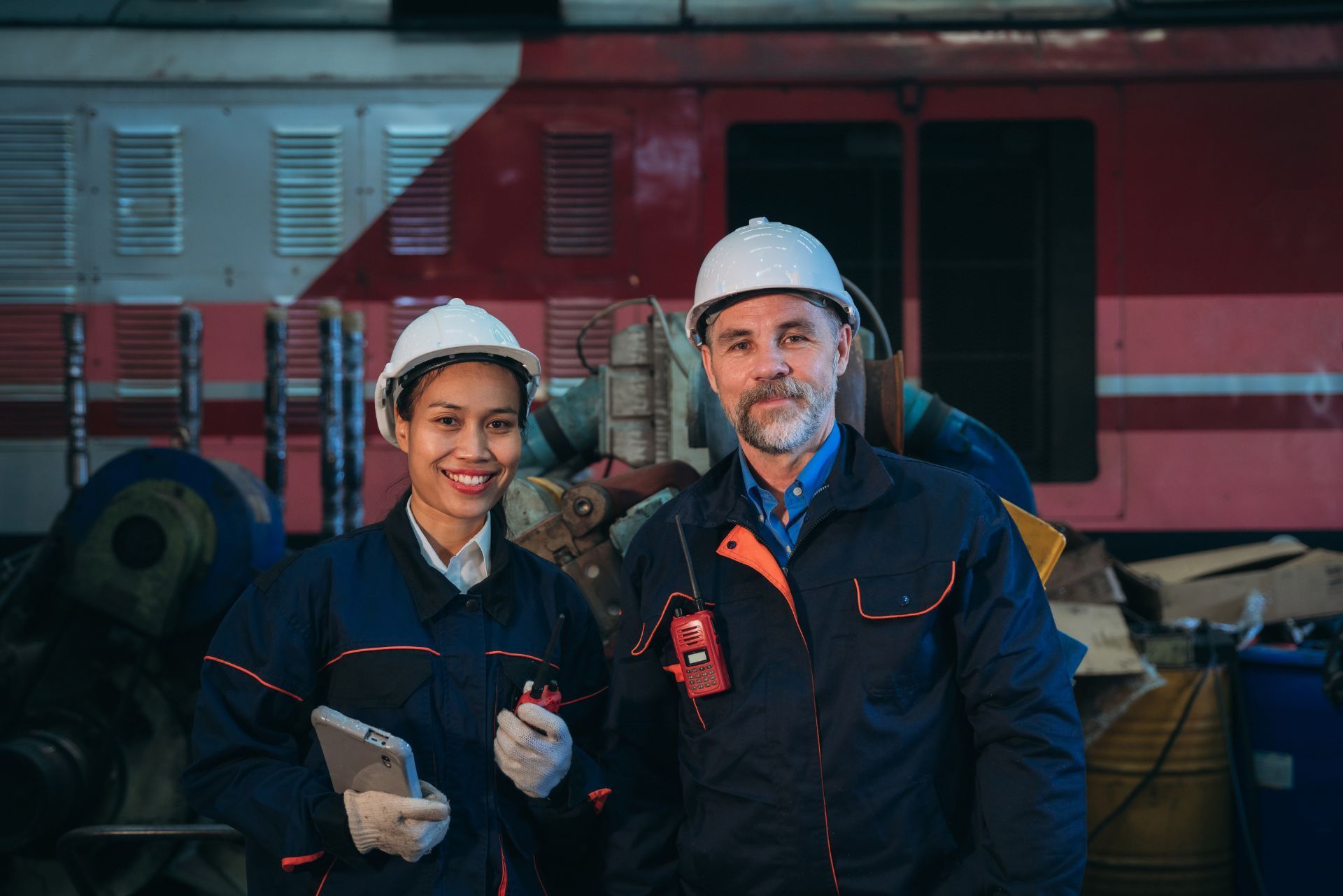Index
Contact Us
Phone
Location
Simi Valley, CA 93065
The Woodlands, TX 77382
Katy, TX 77494
Working as a railway electrician involves a unique blend of technical skill, safety awareness, and operational precision. These professionals play a critical role in maintaining and repairing the electrical systems that keep trains running safely and efficiently. However, the nature of their work also exposes them to significant risks, making specialized insurance coverage essential. This comprehensive guide explores everything railway electricians need to know about insurance—from the specific hazards they face to the types of coverage available and the evolving landscape of railroad industry safety.
Understanding the risks and protections available is crucial, especially considering that electrical fatalities account for 6% of all workplace fatalities, a sobering statistic that underscores the importance of adequate insurance and safety measures in this field.
Electrical Safety Foundation International highlights these risks, which railway electricians must mitigate through both careful work practices and comprehensive insurance policies.
The Unique Risks Faced by Railway Electricians
Railway electricians operate in a challenging environment where electrical hazards intersect with the complexities of railroad operations. Their work includes maintaining power supplies, repairing signaling equipment, and ensuring the electrical integrity of trains and tracks. These tasks expose them to risks such as electrical shocks, burns, and even fatal accidents. The intricate nature of railway systems means that electricians often work in confined spaces, such as tunnels or undercarriages, where the risk of injury can be compounded by limited visibility and accessibility. This environment demands not only technical expertise but also a keen awareness of one’s surroundings to avoid potential dangers.
In addition to electrical dangers, railway electricians must navigate the operational risks inherent in working near moving trains and heavy machinery. This dual exposure makes their insurance needs more complex than those of electricians working in other industries. The unpredictability of train schedules can also create pressure to complete tasks quickly, sometimes at the expense of safety protocols. Furthermore, the presence of high-voltage equipment means that even a momentary lapse in attention can lead to catastrophic outcomes. Therefore, railway electricians must maintain a rigorous focus on their tasks while being constantly aware of the dynamic environment around them.
Moreover, the railroad industry’s integration of advanced technology has significantly enhanced safety standards, reducing some risks but also introducing new challenges. According to industry experts, these technological advancements require insurance policies that can adapt to evolving safety protocols and equipment. For instance, the introduction of automated signaling systems and remote monitoring technology has streamlined operations but also necessitates that electricians become proficient in new systems and tools. This ongoing evolution in technology means that continuous education and training are essential for electricians to stay current and safe in their roles.
Electrical Fatalities and Workplace Safety
Electrical fatalities represent a serious concern, accounting for 6% of all workplace deaths. For railway electricians, this statistic is a stark reminder of the importance of proper safety equipment and adherence to protocols. The Bureau of Labor Statistics notes that electricians typically wear a variety of safety gear designed to reduce injury risks, including insulated gloves, helmets, and flame-resistant clothing. Additionally, the use of personal protective equipment (PPE) is not just a recommendation but a critical component of daily operations, as it serves as the last line of defense against electrical hazards and other workplace dangers.
Employers and workers alike must prioritize safety training and equipment to minimize these hazards. The good news is that approximately 65% of electrical workers have engaged in formal upskilling or reskilling programs in recent years, enhancing their ability to work safely and efficiently in high-risk environments. These training programs often include simulations and hands-on practice with safety protocols, allowing electricians to prepare for real-world scenarios they may encounter on the job. Furthermore, fostering a culture of safety within the workplace can lead to better communication among team members, ensuring that everyone is vigilant and proactive in identifying and mitigating potential risks. As the industry continues to evolve, the commitment to safety and ongoing education will be paramount in protecting these essential workers.

Essential Insurance Coverage for Railway Electricians
Given the specialized nature of their work, railway electricians require insurance policies tailored to their unique risks. Standard general liability insurance may not be sufficient to cover the complexities of electrical and railroad-related hazards.
Key types of insurance coverage for railway electricians include:
- Workers’ Compensation: Covers medical expenses and lost wages due to work-related injuries or illnesses.
- General Liability Insurance: Protects against third-party claims of bodily injury or property damage.
- Professional Liability Insurance: Also known as errors and omissions insurance, it covers claims related to professional mistakes or negligence.
- Equipment and Tools Insurance: Protects the valuable tools and equipment essential for electrical work.
- Railroad-Specific Coverage: Some insurers offer policies designed to address the unique risks of working on or near railroad property, including coverage for accidents involving trains or rail infrastructure.
Because railway electricians often work under contracts with railroad companies, insurance requirements may be dictated by contractual obligations, making it essential to understand the specific terms and coverage limits.
In addition to these essential coverages, railway electricians should also consider the importance of liability limits that reflect the scale of their operations. For instance, larger projects may necessitate higher coverage limits to account for the potential risks involved, such as working in high-traffic areas or near live rail lines. Furthermore, electricians should stay informed about the latest safety regulations and industry standards, as these can impact both their insurance needs and their operational practices. Engaging with industry associations can provide valuable resources and insights into best practices for maintaining compliance and ensuring safety on the job.
Adapting to Industry Changes
The railroad insurance landscape is undergoing significant shifts driven by evolving market needs and technological advancements. Modern insurance products are increasingly incorporating risk management tools and data analytics to better assess and mitigate risks associated with railway operations.
For example, recent innovations in transformer vibration forecasting use advanced deep learning models to predict mechanical failures in railway axles, helping prevent accidents before they occur. This kind of technology integration not only improves safety but also influences insurance underwriting practices by providing more accurate risk assessments. Additionally, the use of drones for inspections and monitoring can further enhance safety measures, allowing railway electricians to identify potential hazards without putting themselves at risk. Learn more about these developments at arXiv.org.
Moreover, as the industry embraces greener technologies and renewable energy sources, railway electricians may find themselves needing coverage that addresses the unique risks associated with these innovations. From solar panel installations on train stations to electric train systems, the evolving landscape of railway electrification is creating new opportunities and challenges. Insurers are beginning to recognize these trends and are developing specialized policies that cater to the changing needs of railway electricians, ensuring they are adequately protected in this dynamic environment.
Railroad Industry Safety Standards and Their Impact on Insurance
Safety standards in the railroad industry have evolved considerably, driven by regulatory bodies and technological progress. These standards directly affect the insurance requirements and premiums for railway electricians.
Enhanced safety protocols, such as mandatory use of personal protective equipment (PPE) and rigorous maintenance schedules, have helped reduce workplace incidents. Insurance providers factor these improvements into their risk models, often offering more favorable terms to electricians and contractors who demonstrate compliance with best practices.
Railroad expert witnesses, who specialize in transportation safety and railroad operations, play a vital role in legal and insurance claims related to accidents or disputes. Their expertise helps clarify liability and ensure fair outcomes, which can influence insurance coverage decisions and claims handling. More about their role can be found at Expert Institute.
Training and Upskilling for Safety
Continuous training and upskilling are essential for maintaining high safety standards. The electrical industry has seen a significant push towards formal education programs, with about 65% of workers completing such initiatives in the past three years. This trend not only improves workplace safety but also helps electricians meet the evolving requirements of insurance providers.
Employers who invest in ongoing training can reduce workplace accidents and potentially lower their insurance premiums, creating a safer and more cost-effective working environment. Additionally, the integration of advanced technologies, such as simulation-based training and virtual reality, has revolutionized how safety protocols are taught. These innovative training methods provide electricians with hands-on experience in a controlled environment, allowing them to practice emergency responses and equipment handling without the risks associated with real-world scenarios. This proactive approach not only enhances skill retention but also fosters a culture of safety that permeates the entire organization.
Furthermore, the emphasis on mental health and wellness within the workforce has become increasingly recognized as a critical component of safety. Programs aimed at reducing stress and promoting mental well-being can lead to improved focus and decision-making, which are paramount in high-stakes environments like railroads. By addressing both physical and psychological aspects of safety, the railroad industry is not only complying with current standards but also setting a precedent for future practices that prioritize the well-being of all employees.
The Growing Demand for Skilled Railway Electricians
Employment in the electrical field is projected to grow steadily, with an anticipated 6% annual increase in job openings until 2032. This growth reflects the expanding infrastructure needs and technological upgrades across industries, including railroads. As rail systems modernize to accommodate faster trains and more efficient energy use, the role of electricians becomes increasingly vital. The integration of renewable energy sources, such as solar and wind, into railway operations is also driving demand for skilled professionals who can navigate these new systems.
With about 73,500 electrician job openings each year, the demand for skilled railway electricians is strong. This growth underscores the importance of having robust insurance coverage to protect workers as the industry evolves. Moreover, as rail networks expand globally, the need for electricians who can work on international projects is also on the rise. This trend presents exciting opportunities for those willing to travel and adapt to different regulatory environments, further enhancing the appeal of a career in railway electrics.
The increasing complexity of electrical systems on railroads, combined with the integration of new technologies, means that electricians must be well-prepared and insured against emerging risks. More on the employment outlook can be found at CNBC. As technologies such as automation and artificial intelligence become more prevalent in the industry, electricians will need to continuously update their skills through training and certifications. This commitment to lifelong learning not only enhances job security but also positions electricians as indispensable assets in a rapidly changing work environment.
Insurance as a Component of Career Security
For railway electricians, insurance is not just a regulatory requirement but a critical component of career security. Comprehensive insurance coverage ensures that they are protected against financial losses stemming from accidents, equipment damage, or professional liability claims. Additionally, as the industry faces increasing scrutiny regarding safety standards and environmental regulations, having the right insurance can provide peace of mind and a competitive edge in the job market.
As the industry continues to grow and evolve, staying informed about insurance options and maintaining appropriate coverage will be essential for long-term success and safety in this demanding profession. Electricians should also consider specialized policies that address the unique risks associated with railway work, such as coverage for high-voltage systems or equipment used in remote locations. By proactively managing their insurance needs, railway electricians can focus on their craft, knowing they have a solid safety net in place while they contribute to the future of rail transportation.

Conclusion: Navigating Railway Electrician Insurance with Confidence
Railway electricians face a unique set of challenges that demand specialized insurance coverage. From the inherent electrical hazards to the complexities of working within the railroad environment, understanding these risks is the first step toward securing the right protection.
Advancements in railroad safety standards and technology are shaping the insurance landscape, offering new opportunities for risk mitigation and improved coverage. Staying current with industry developments, investing in ongoing training, and selecting tailored insurance policies can help railway electricians safeguard their health, livelihood, and career.
With workplace fatalities related to electrical hazards remaining a critical concern, it is more important than ever to prioritize safety and insurance. For those in this vital profession, comprehensive insurance is not just a safety net—it is a foundation for a secure and sustainable career. Explore more about the evolving railroad insurance market at
The Insurance Universe.
Types of Electrician Insurance We Provide
Areas we serve




